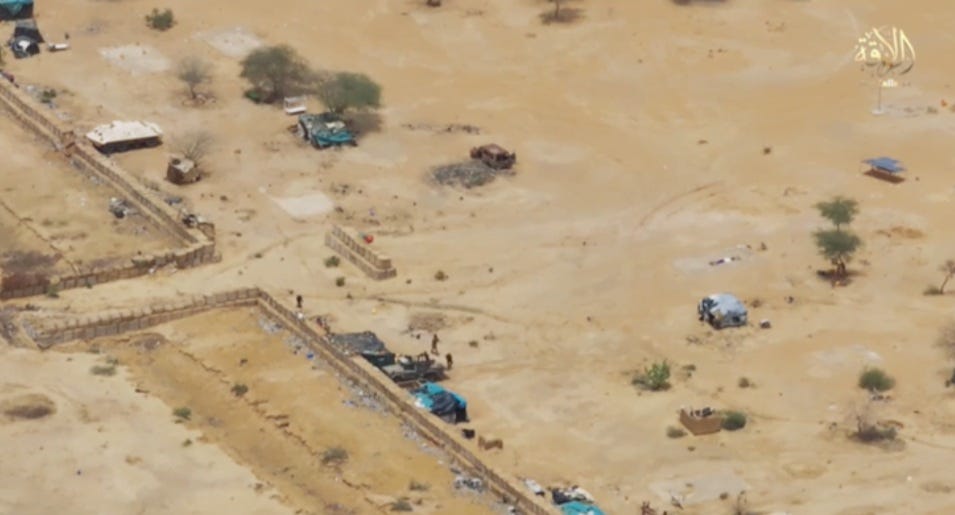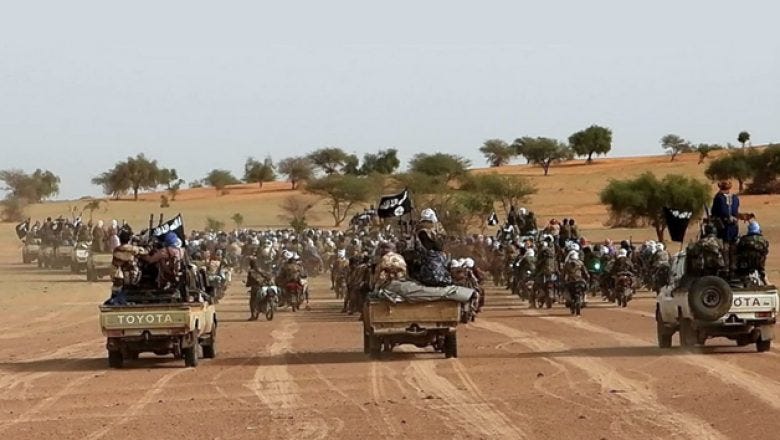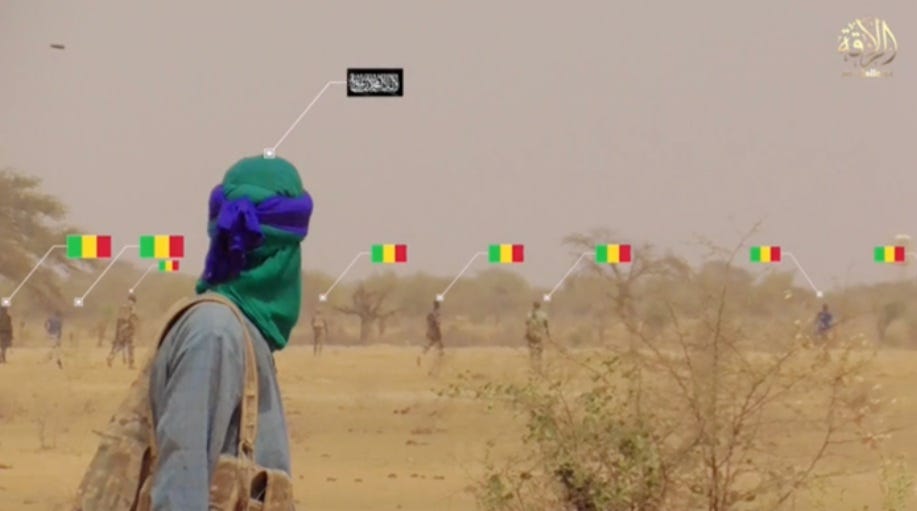On June 2, extremists from militant group Jama'at Nasr al-Islam wal-Muslimin (JNIM) launched a major coordinated attack on Mali’s main military camp in the city of Timbuktu and three checkpoints around the city. The operation involved vehicle-borne improvised explosive devices (VBIEDs), infiltration militants, and a rocket attack on the Timbuktu airport, which is known to host members of the Russian “PMC” Wagner Group — now operating under the Africa Corps umbrella. Reports suggest that up to 30 soldiers were killed, with many others wounded. Images released by JNIM showcased captured weapons, ammunition, and the IDs of soldiers — as part of an ongoing propaganda strategy designed to feature the group’s strength and to wipe out confidence in local forces.
JNIM temporarily took control of several positions/checkpoints before retreating, consistent with its well-established hit-and-run tactics. However, the scale and sophistication of the Timbuktu attack, including the use of multiple units and indirect fire, indicate that JNIM’s operational tempo has increased.
Tactical Gaps and Command Friction
Despite the success that JNIM achieved in the Timbuktu attacks, a local source suggested that the attack was flawed because of internal leadership friction. The operation was allegedly led by Abu Dardar Chenguetti, a Mauritanian national, alongside a local commander, Abu Qotada. According to the same source, the Inghimasi (Arabic for infiltrators) failed to fully achieve their objectives due to poor coordination, limiting the damage inflicted inside the main military base. However, the first assault team succeeded in overrunning outposts around Timbuktu and launched artillery attacks on the airport, creating confusion and panic among government troops and civilians.
Boulkessi: Another Critical Blow to Malian Forces
The Timbuktu assault was preceded by a devastating June 1st attack on a Malian military camp in the strategic garrison town of Boulkessi in the Mopti Region, near the border with Burkina Faso. An estimated 200 fighters from Katibat Macina, a JNIM sub-group, overran the Malian Armed Forces (FAMa) base, which plays a key role in securing the Douentza, a sub-region within Mopti torn by intercommunal violence and insurgency. The camp was looted and destroyed. While JNIM claimed to have killed Russian operatives in the attack, local sources confirmed that a body shown in propaganda material was that of a Tuareg officer in FAMa, which explains his lighter skin tone.
FAMa acknowledged the incident and announced that a search operation had been launched, claiming that several attackers had been neutralised during their retreat. However, with up to 100 soldiers reportedly killed and reports of prisoners being taken, the attack represents a major failure to FAMa’s intelligence.
As the attack happened on the border of Burkina Faso, the country reportedly deployed a Bayraktar TB2 drone to support FAMa. A Sukhoi Su-24 was also reportedly seen over Boulkessi, which is a rare demonstration of aerial response capacity.
Despite these efforts, the Boulkessi death toll appears to be high, with sources confirming around 70 soldiers killed in the assault.
The Boulkessi assault forms part of a broader pattern of JNIM’s escalation of activity across the border between Burkina Faso and Mali, including major offensives in Burkina Faso. In Djibo, Burkina Faso, less than 100km from the Boulkissi military camp, JNIM reportedly killed around 200 Burkinabe soldiers in one of its largest operations this year.
In Burkina Faso’s Est Region, the group temporarily seized control of Diapaga, a provincial capital, for approximately 10 days, releasing prisoners, thereby demonstrating its capacity to disrupt governance and local security structures.
The takeover of Diapaga marked the longest period JNIM has held a major town in Burkina Faso to date. All of these events might suggest a shift in JNIM’s approach and an attempt to move from raids and hit-and-run attacks to testing territorial control, even if only temporarily.
In Dioura, central Mali, another JNIM attack on May 23 was also considered a noticeable advance in JNIM’s operational tactics. The attack, according to a local source, was a joint operation between two JNIM sub-groups, Katibat Macina and the Al-Furqan Brigade, the latter falling under the Timbuktu Wilayah, which is controlled by JNIM. This kind of inter-unit coordination, particularly across wilayah boundaries, possibly indicates growing internal coordination within JNIM’s command structure, likely reinforced by the appointment of a new emir for Timbuktu Wilayah.
Footage from the Dioura attack also showed the use of JNIM drones to film and track FAMa soldiers, indicating an integration of drones for reconnaissance and tactical planning.

Defections and Consolidation
It appears that JNIM’s ranks have been boosted by defectors from former rebel factions, including fighters previously affiliated with Hussein Gholam, a former commander in the Front de Libération de l’Azawad (FLA). Gholam and his men defected last year, bringing with them vehicles and weapons. These men were recently seen fighting alongside JNIM during the Dioura attack.
The spike of JNIM activity and the intensity of attacks seems similar to the dynamics of 2012–2013 in northern Mali, when jihadi groups took advantage of fractures within northern armed movements and the weakness of the Malian authorities in order to consolidate control. However, unlike that period, there is now no major foreign military presence to intervene. With France’s withdrawal and the newly-formed Alliance of Sahel States (AES) overstretched, regional militaries are struggling to respond effectively.
The situation is further complicated by renewed activity from northern rebel groups, which recently conducted a drone strike on FAMa’s Soumpi military camp, also in the Timbuktu region. While the FLA is distinct from JNIM in its agenda and activities, it presents an additional challenge to the authorities in the Mali capital city of Bamako.
The series of attacks in Mali and Burkina Faso in May and early June marks an escalation in both scale and coordination for JNIM. The group is more and more demonstrating tactical flexibility, technological adaptation with the deployment of drones, and internal coordination between JNIM’s sub-groups, which should position it to apply greater control over key territories, particularly in areas where national and regional forces are stretched thin. Slowly, JNIM may begin to assert control over more territory and establish parallel governance structures, while national armies within the AES bloc grow increasingly tired and demoralised, becoming a shadow of their former selves.





